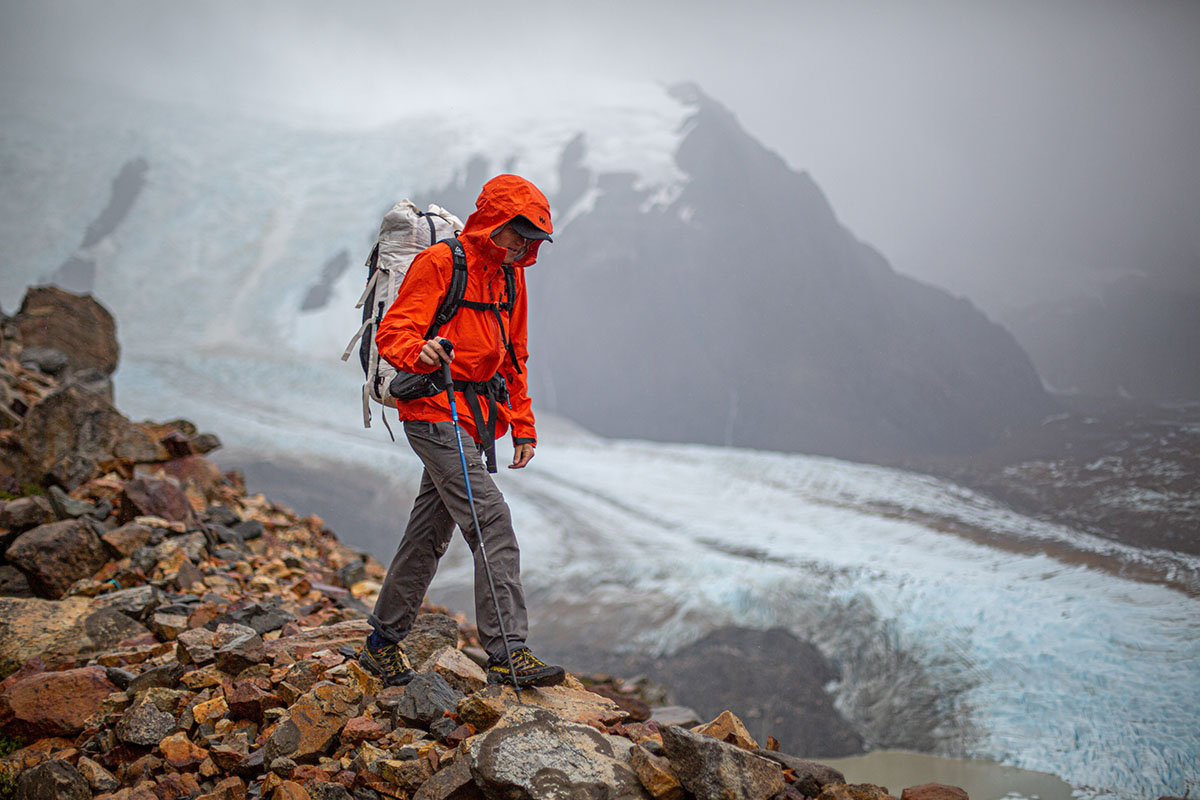
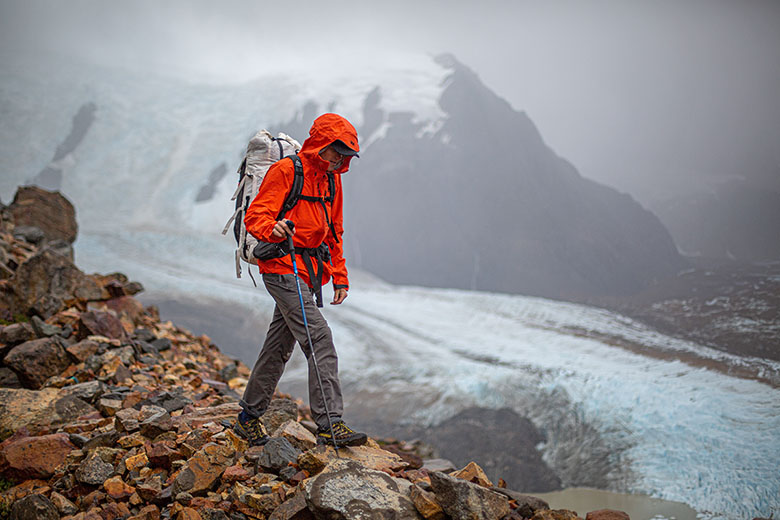
Price: $450
Weight: 1 lb. 6.9 oz. (men’s)
Waterproofing: 3L Helly Tech Professional
What we like: A robust and four-season-ready hardshell with a nice sustainability slant.
What we don’t: Decidedly heavy and overkill for most non-winter activities.
See the Men's Odin 9 Worlds 3.0 See the Women's Odin 9 Worlds 3.0
Norway-based Helly Hansen is no stranger to harsh mountain environments, and their Odin collection is purpose-built for keeping you protected in unrelenting weather. We recently tested the new 3.0 version of their best-selling Odin 9 Worlds in appropriately rough conditions while backpacking in Patagonia and ski touring back home in Washington State. As expected, it handled brutally wet and windy weather with aplomb, but the burly design comes with compromises. Specifically, it’s decidedly heavy—even in the alpine hardshell market—and overkill for mild weather and weight-conscious missions. Below we cover our experiences with the Odin 9 Worlds 3.0. To see how it stacks up to the competition, check out our article on the best hardshell jackets.
The Odin 9 Worlds 3.0 Jacket boasts Helly Hansen’s top-end Helly Tech Professional waterproof membrane, which proved to be a great match for the challenging conditions we faced in Patagonia. For added assurance, the exterior is coated in a durable water repellent (DWR) finish that prompts moisture to bead up and roll off the surface rather than soak in, and all of the seams are sealed to minimize vulnerabilities. Combined with the jacket’s robust shell fabric, the Odin 9 Worlds has a decidedly stalwart and confidence-inspiring feel in inclement weather. In Patagonia, the Odin 9 Worlds held up remarkably well, effectively sealing out moisture during all-day rain and blocking the powerful gusts. It was a similar story while ski touring last spring, although the lack of breathability (more on this below) limits the jacket's appeal for working hard in mild weather. In the heart of winter or at the resort, however, the thick shell is a welcome reprieve. 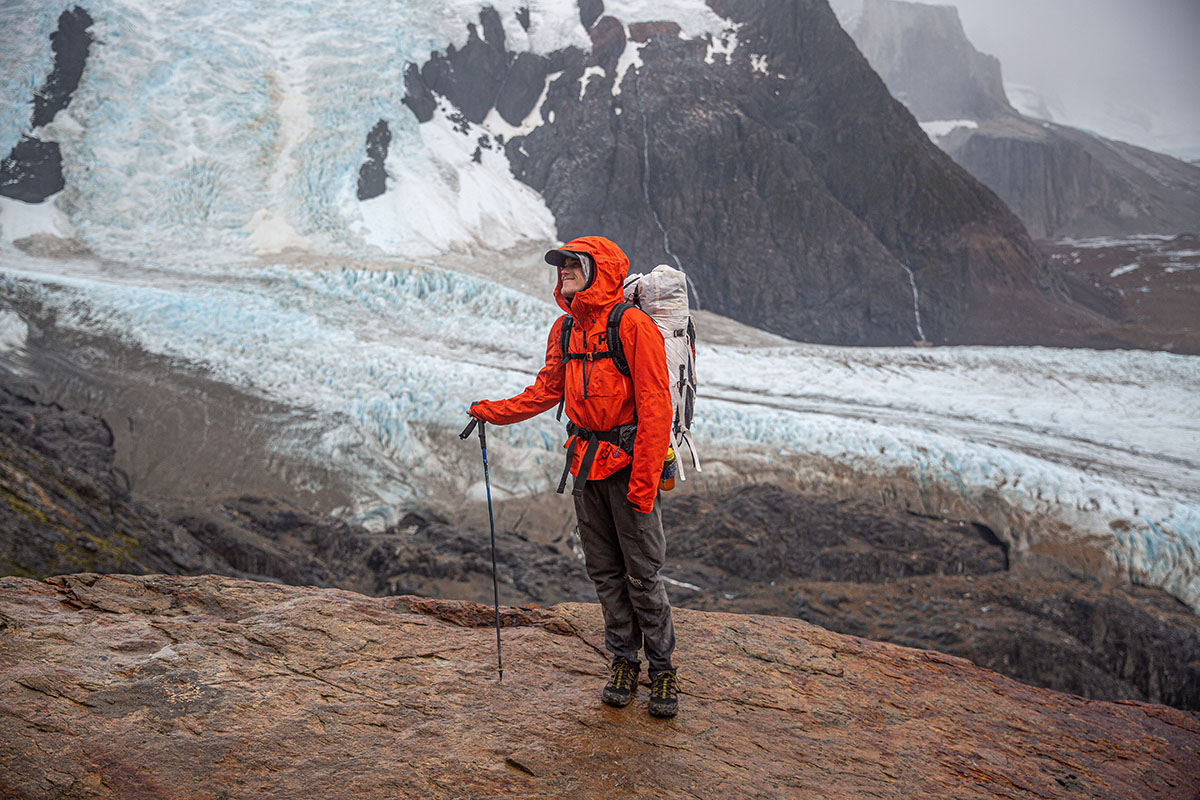
Along with its quality membrane, the Odin 9 Worlds 3.0 includes ample features to batten down the hatches. For starters, the helmet-compatible hood is well executed with four drawcords for dialing in fit and maximizing coverage. Helly Hansen also included YKK zippers on the chest and hand pockets that are highly water-resistant and trustworthy enough to protect valuables. To further seal out the elements, the hem is equipped with dual drawcords for cinching the waist, and the cuffs have Velcro closures that can secure either over or under gloves. Finally, the jacket offers generous coverage with a slight drop-tail hem at the back for a boost in protection when sitting down or bending over.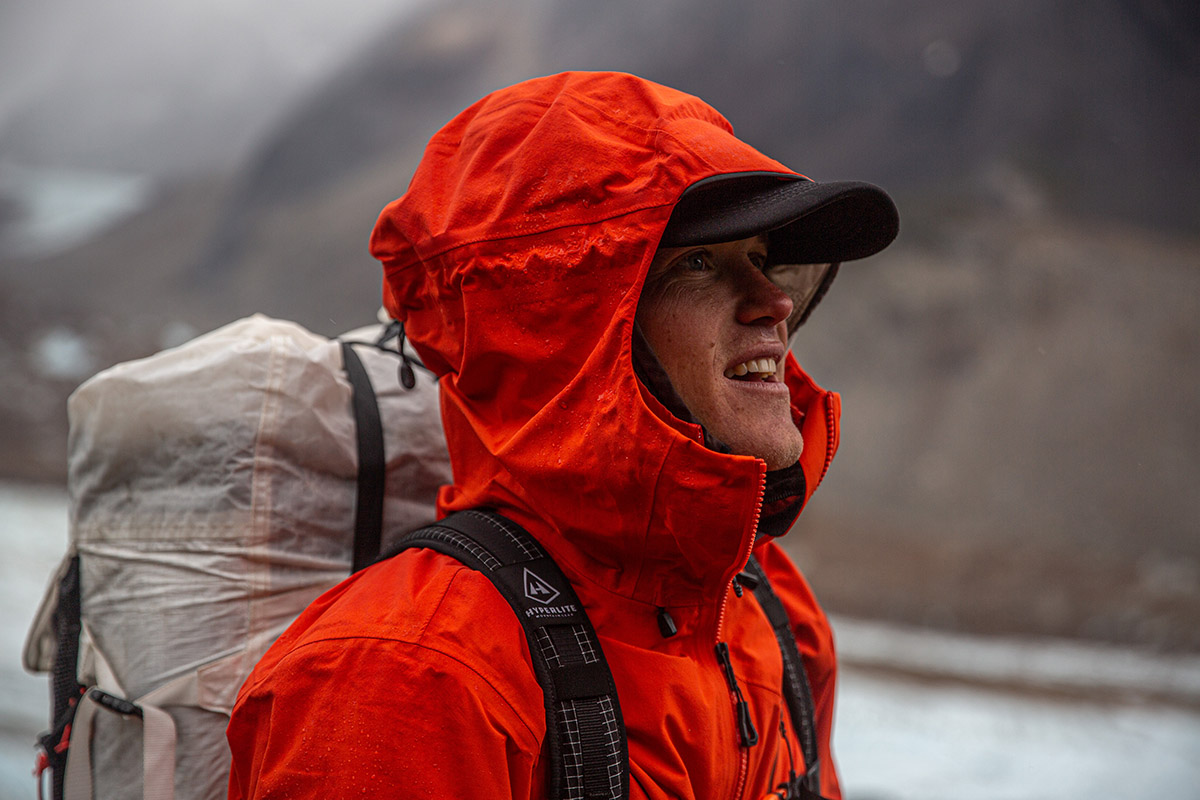
Unfortunately, the Odin 9 Worlds’ protective and burly construction comes at the cost of breathability, which isn’t uncommon among mountain-ready hardshells. Despite the rain cooling things down significantly in Patagonia (temperatures hovered in the high 30s to low 50s Fahrenheit during our trek), I was quick to grow sweaty, which resulted in a noticeably clammy feeling inside the shell. I had similar experiences on subsequent spring ski tours, although the sizable pit zips helped considerably with regulating temperature (bonus: The openings are easy to fine-tune with two-way zippers). In the end, I’d rate the Odin’s breathability as a step down from premium Gore-Tex competitors like the Arc’teryx Beta AR and fairly limiting for activities like shoulder-season backpacking. But for cold-weather adventuring—especially in inclement weather—the Odin 9 Worlds is perfectly serviceable.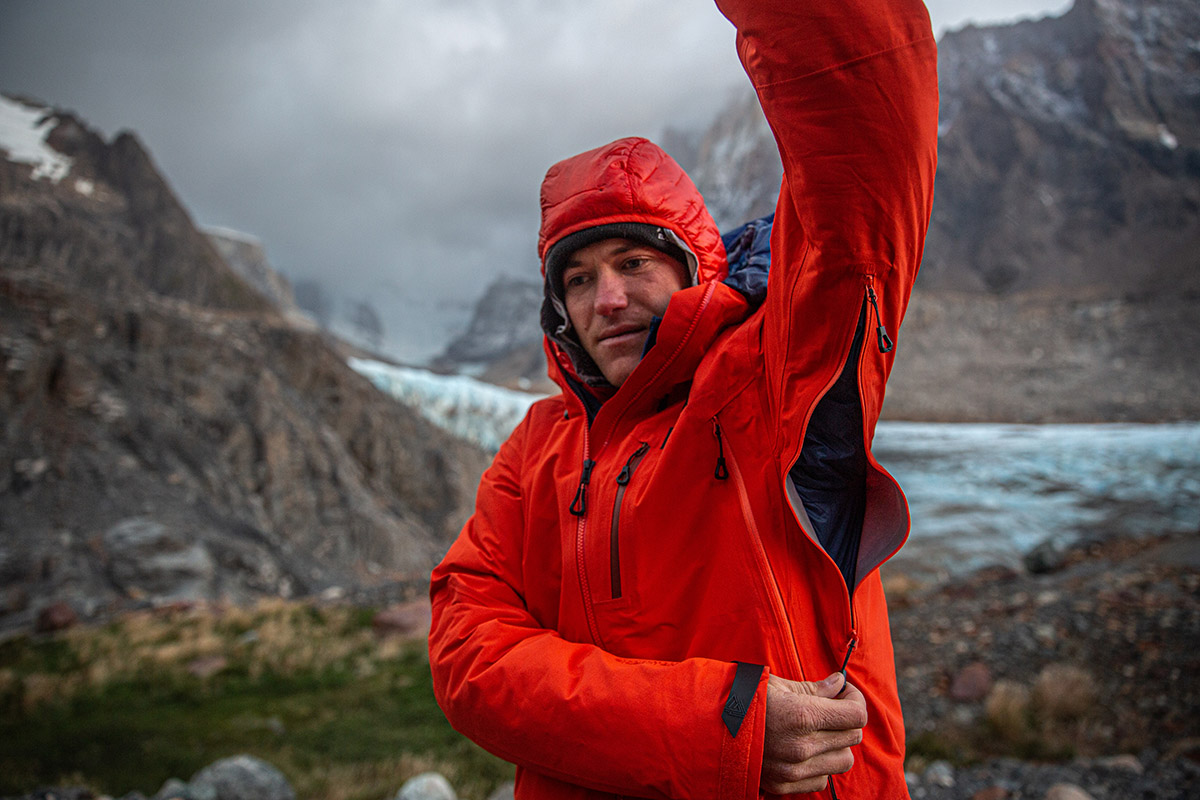
In short, the Odin 9 Worlds has a decidedly stiff and bulky feel for active uses like hiking and backpacking. For comparison, comfort lines up similarly with a ski-ready and very durable shell like Norrona's Trollveggen Gore-Tex Pro while coming up short of Arc’teryx’s top-end and more streamlined Alpha SV. On the bright side, the articulated sleeves and big-for-me sizing (more on the latter below) resulted in great all-around mobility, allowing me to reach overhead without the jacket riding up. Another nice touch is that Helly Hansen included a brushed tricot lining inside the collar, which reaches to the very top where it comes into contact with your chin when zipped up. While subtle, the soft fabric was a welcome feature when tucking my face away in harsh weather. However, if all-around comfort outweighs durability for you, we recommend a lighter and thinner shell, including Helly Hansen's own Verglas Infinity.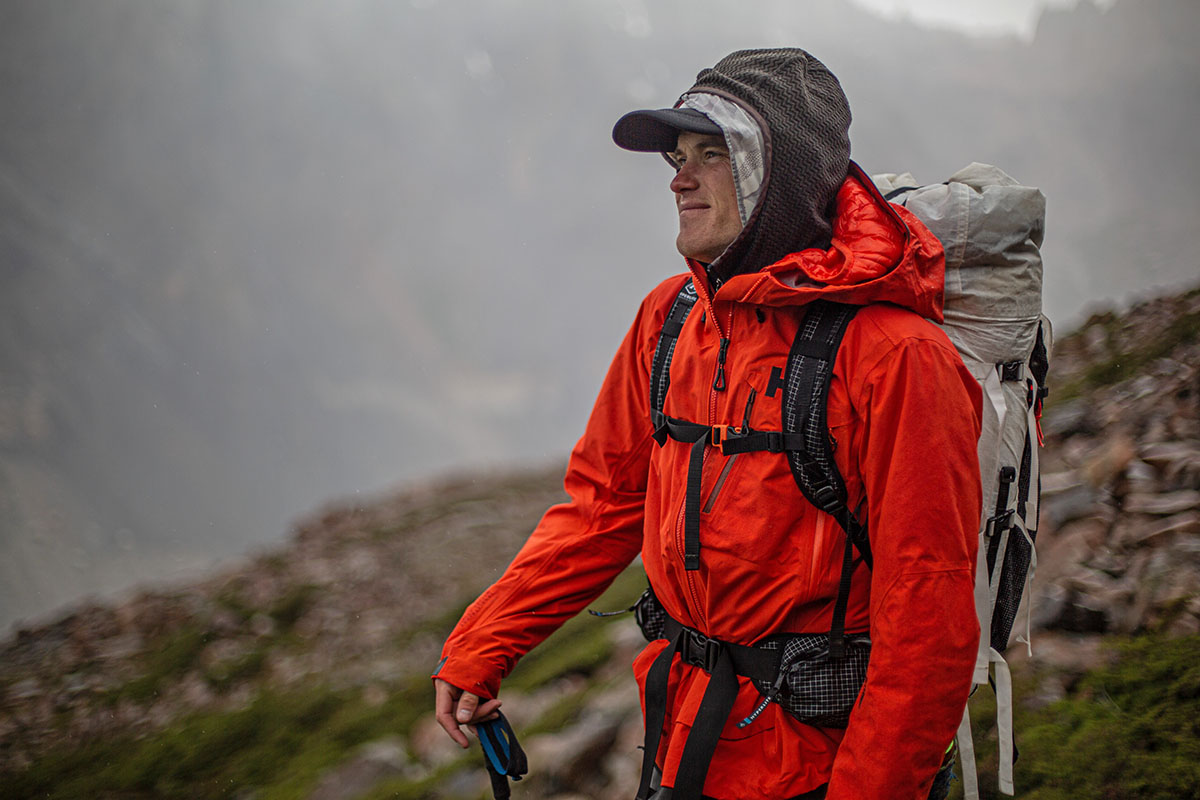
Durability is a clear strong suit of the Odin 9 Worlds 3.0 Jacket. As I alluded to above, the jacket’s shell fabric is noticeably thick at 70-denier (D), which stacks up very well to other mountain-ready hardshells like Arc’teryx’s Beta AR (which uses a mix of 40D and 80D fabrics), Rab’s Kangri GTX (70D), and Patagonia’s Triolet (75D). In testing, the Odin held up flawlessly to bushwhacking through thick trees and brush en route to our campsite at the base of the Torre Glacier and emerged from the trip looking like new. All of the smaller components have a similarly confidence-inspiring feel, although I did come away with a couple of nitpicks. Specifically, the drawcord cinches are a little finicky—they’re quick to pull up slack but take some finesse to release, especially with gloves on—and the main zipper is fairly bulky and prone to catching near the top. But these are relatively minor complaints for an otherwise premium-feeling hardshell, and overall build quality feels on par with high-end Gore-Tex competitors.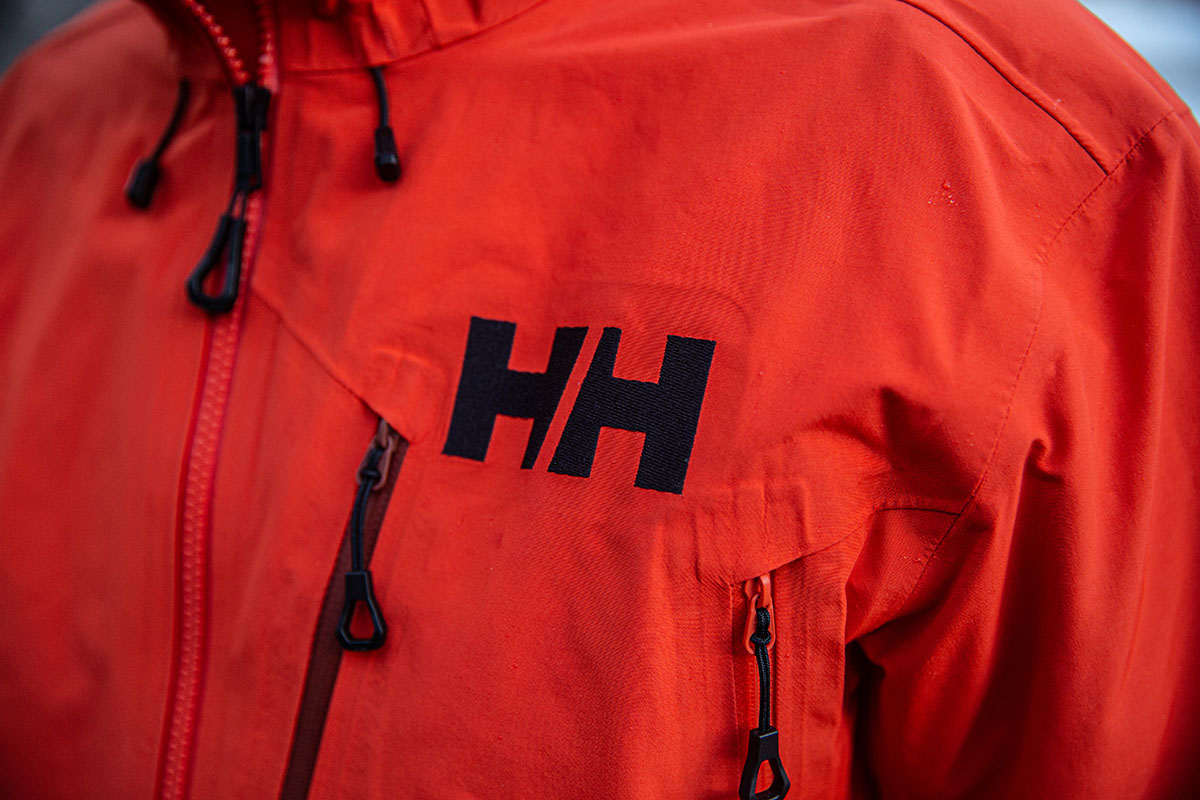
At 1 pound. 6.9 ounces for the men’s version, the Odin 9 Worlds 3.0 Shell Jacket is an unapologetically hefty and bulky hardshell. In fact, it’s the heaviest design to make our best-of list this season by a sizable margin, outweighing similarly protective competitors including the aforementioned Beta AR (1 lb.) and Triolet (1 lb. 2 oz.). The same goes for most other mountain-ready designs, including Arc’teryx’s essentially bombproof Alpha SV (1 lb. 2 oz.), Norrøna’s Trollveggen Gore-Tex Pro Light (1 lb. 0.3 oz.), and Rab’s Kangri GTX (1 lb. 2.5 oz.).
The Odin’s packability was similarly unimpressive—a far cry from the minimalist shells I’ve grown to love throughout years of guiding and mountain adventures. Again, the Odin does offer notable benefits in durability and protection over fast-and-light shells, but the jump in weight and bulk are disproportionate, in my opinion.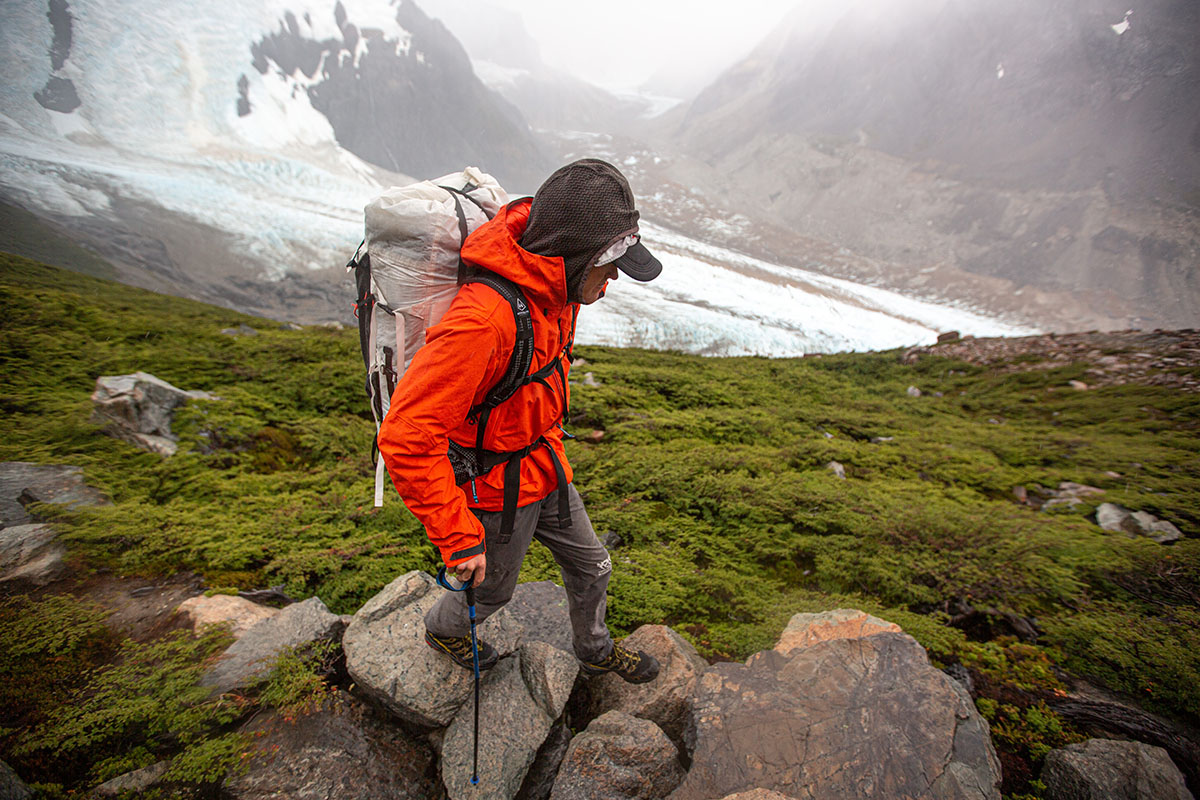
Hood design can have a big impact on a shell’s overall protection and performance, and I’m happy to report that the Odin has a good one. In addition to being helmet-compatible and plenty big for squeezing over a climbing or ski lid, the hood is highly adjustable with four drawcords for dialing in fit: two at the front and two at the back. There’s also a nicely sized brim for deflecting moisture away from the face, which includes a hidden Recco reflector for transmitting your location to rescuers in the event of an emergency. I should note that the hood did look and feel a little ungainly while backpacking with just a ball cap or beanie underneath—Arc’teryx’s StormHood design is noticeably more streamlined by comparison—but given the Odin’s technical intentions, this wasn’t too big of a surprise and certainly not a dealbreaker.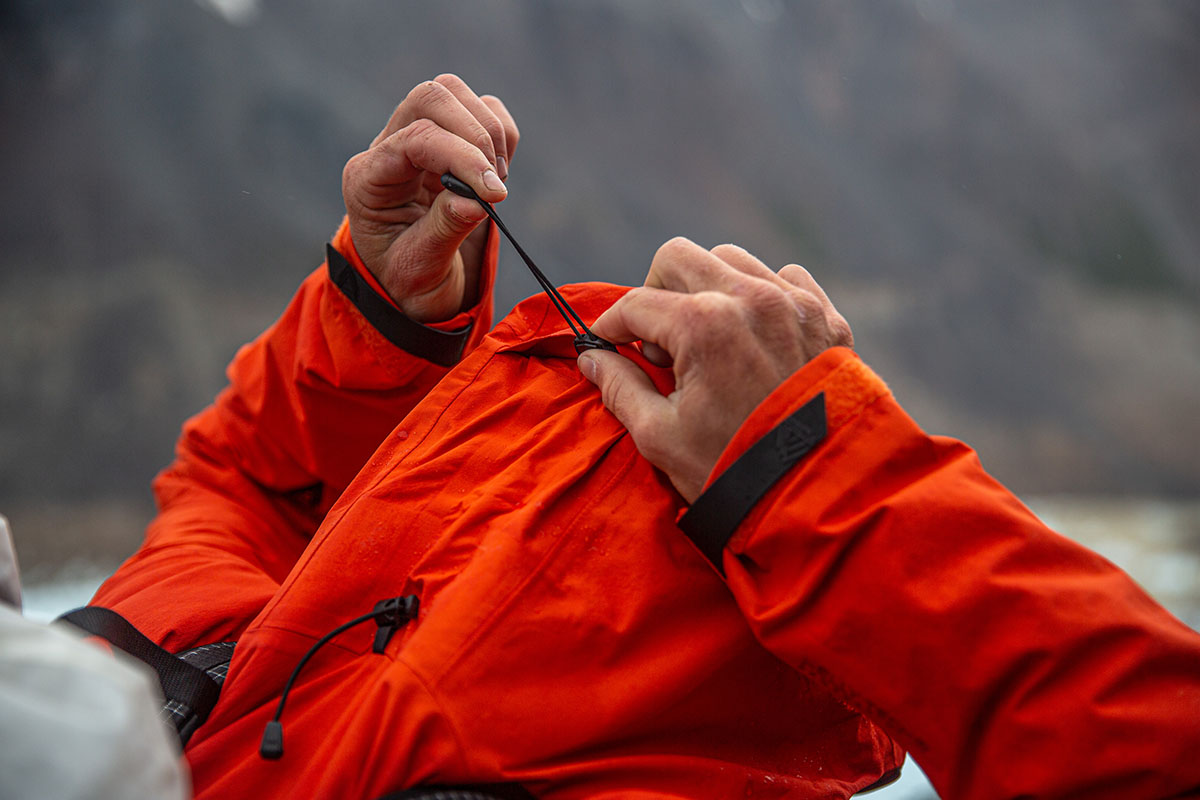
The Odin is a bit of a mixed bag in the storage department. Starting with the good news, the exterior comes well equipped with oversized hand pockets and a nicely sized chest pocket. The former extend virtually from armpit to waist and boast two-way zippers so you can access one end without opening the entire length (particularly helpful when wearing a backpack or harness). In practice, I was able to fit a pair of climbing skins or goggles with room to spare. And the chest pocket can accommodate a phone or a couple of snacks, which is a nice supplement to the massive hand pockets. 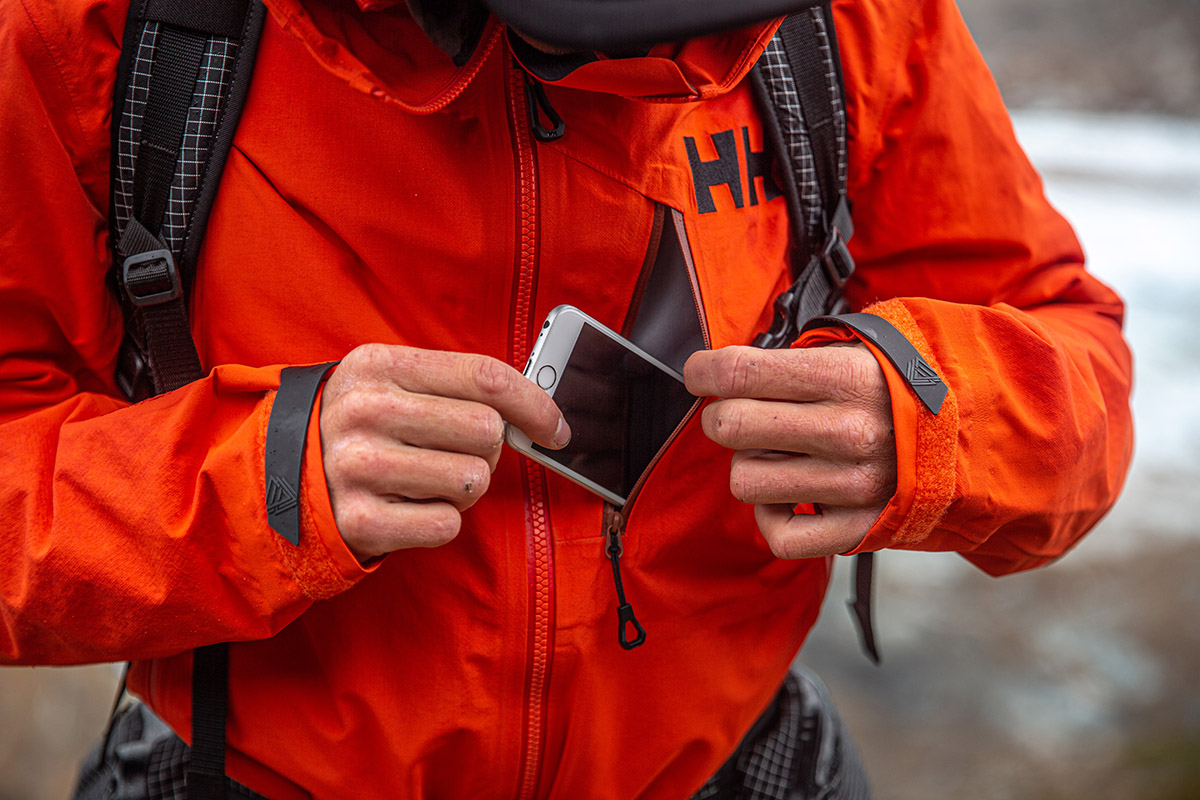
Now for the bad news: The Odin has no interior storage. For reference, most competitors include at least one pocket on the inside, which can be helpful for stashing electronics to keep them closer to your body and protected from the elements. Additionally, many mountain-focused designs come with drop-in-style pockets for quickly stashing skins or ski gloves during transitions. As I mentioned, I was able to make do by utilizing the large hand pockets to store bulky items, but that meant that I had no place to put my cold hands.
Helly Hansen typically runs on the trim side like many European brands, but I didn’t find that to be the case with the Odin 9 Worlds. For reference, I usually wear a men’s medium in hardshell jackets but sometimes need to size up to a large given my tall frame. With that in mind, I expected the latter to fit me well, but it ended up being noticeably roomy. This was great for layering, although the extra fabric resulted in a good amount of bulk when backpacking—especially around the waist, where the jacket bunched up underneath my pack’s hipbelt.
However, it’s worth noting that the Odin was too small for another tester, who typically wears a large but has a noticeably broader build. In other words, I’m not sure that my experience is a perfect representation of the jacket’s fit. If you’re iffy on sizing and can’t try the Odin on in person before buying, Helly Hansen has a very helpful fit calculator on their website, which generates a recommendation based on your height, weight, belly and chest shapes, age, and fit preference. 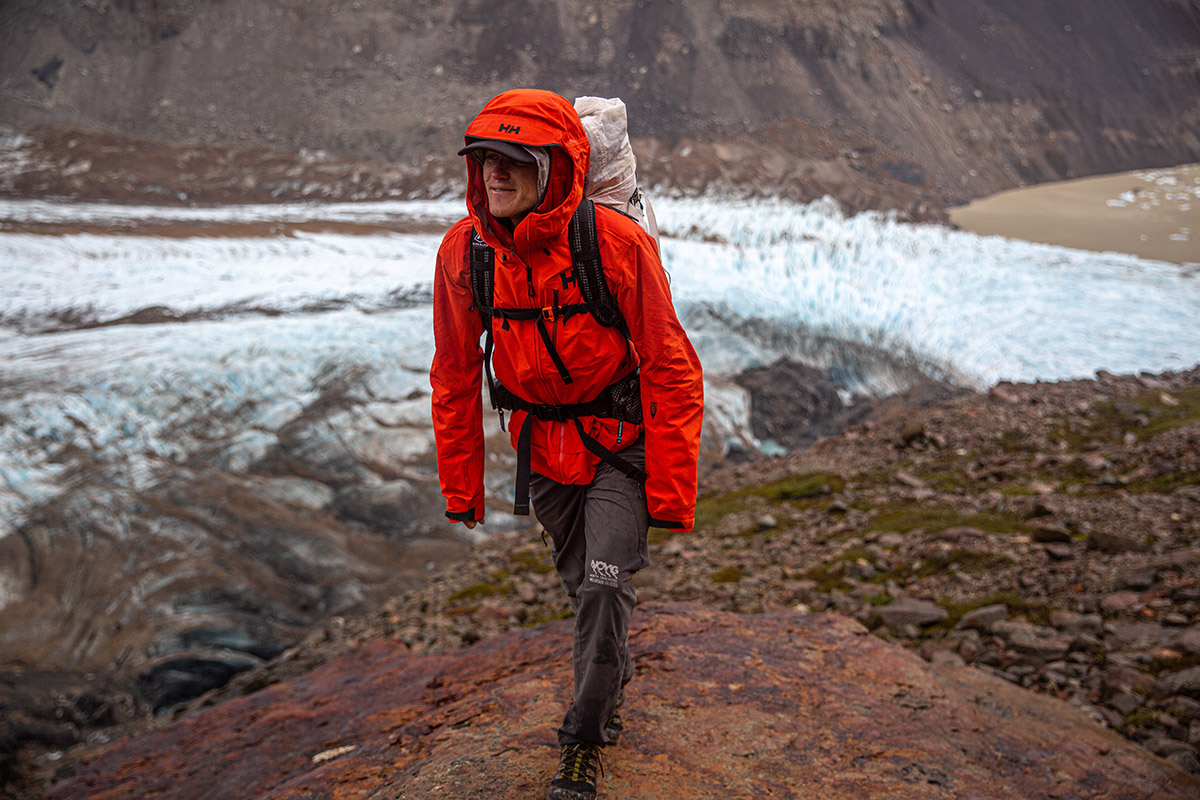
From a sustainability standpoint, the Odin 9 Worlds 3.0 Jacket is very competitive in the hardshell market. For starters, the shell is 68% recycled and made from ocean-sourced plastics. It also boasts a PFC-free DWR coating, which forgoes the use of harmful perfluorocarbons (note: Current nomenclature favors PFAS, which stands for per- and polyfluoroalkyl substances). Finally, the jacket is bluesign-approved, which means it meets strict safety and environmental standards and has been deemed safe for consumers, workers, and the environment. 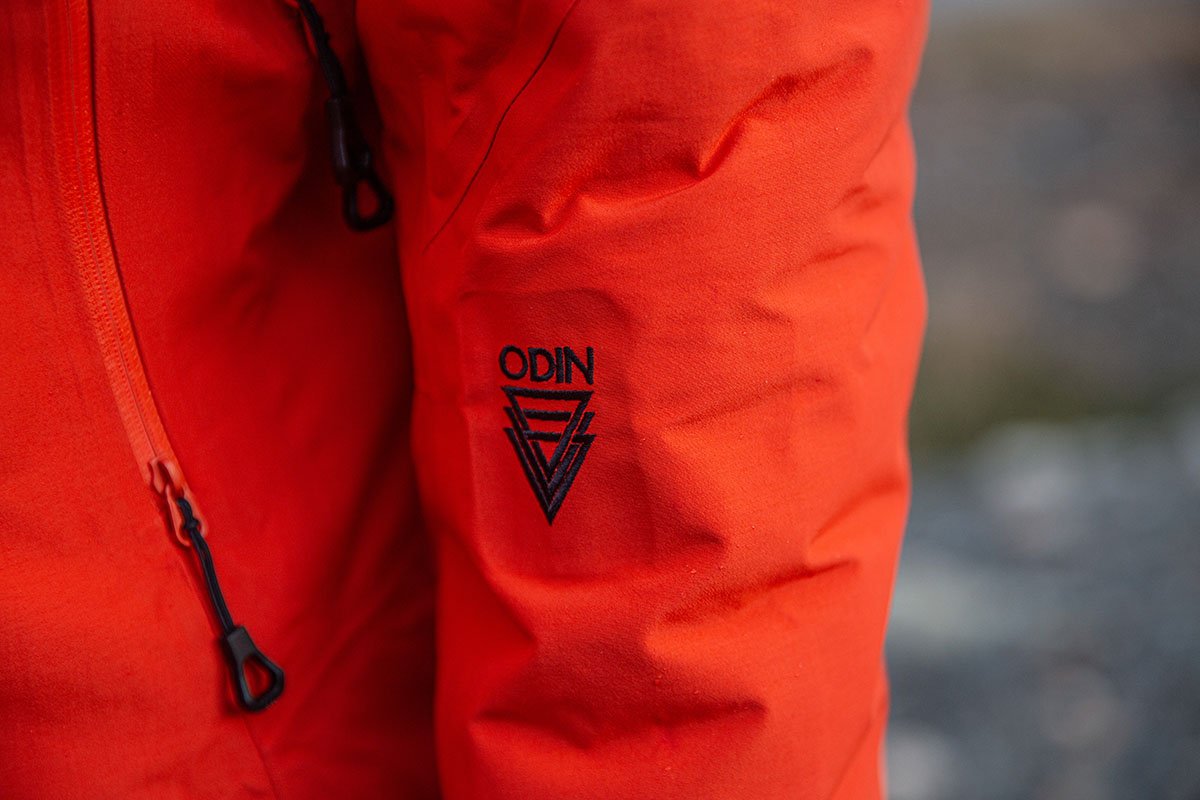
We brought the men’s Odin 9 Worlds 3.0 Shell Jacket to Patagonia for testing, and the women’s version offers similar all-around performance for the same price. In parsing out the differences, the women’s Odin 9 Worlds 3.0 is a little lighter at 1 pound 5.2 ounces and comes in different colorways but boasts an otherwise identical feature set and overall construction. The lineup also includes the Odin 9 Worlds Infinity Shell Jacket and Pants in both men’s and women’s styles, which utilize Helly Hansen’s new Lifa Infinity Pro membrane that’s designed to provide reliable and long-lasting weather protection without the need for additional chemical treatments. In comparing the Infinity model to the Odin 9 Worlds tested here, the former is lighter at 1 pound 3.4 ounces but costs an additional $125.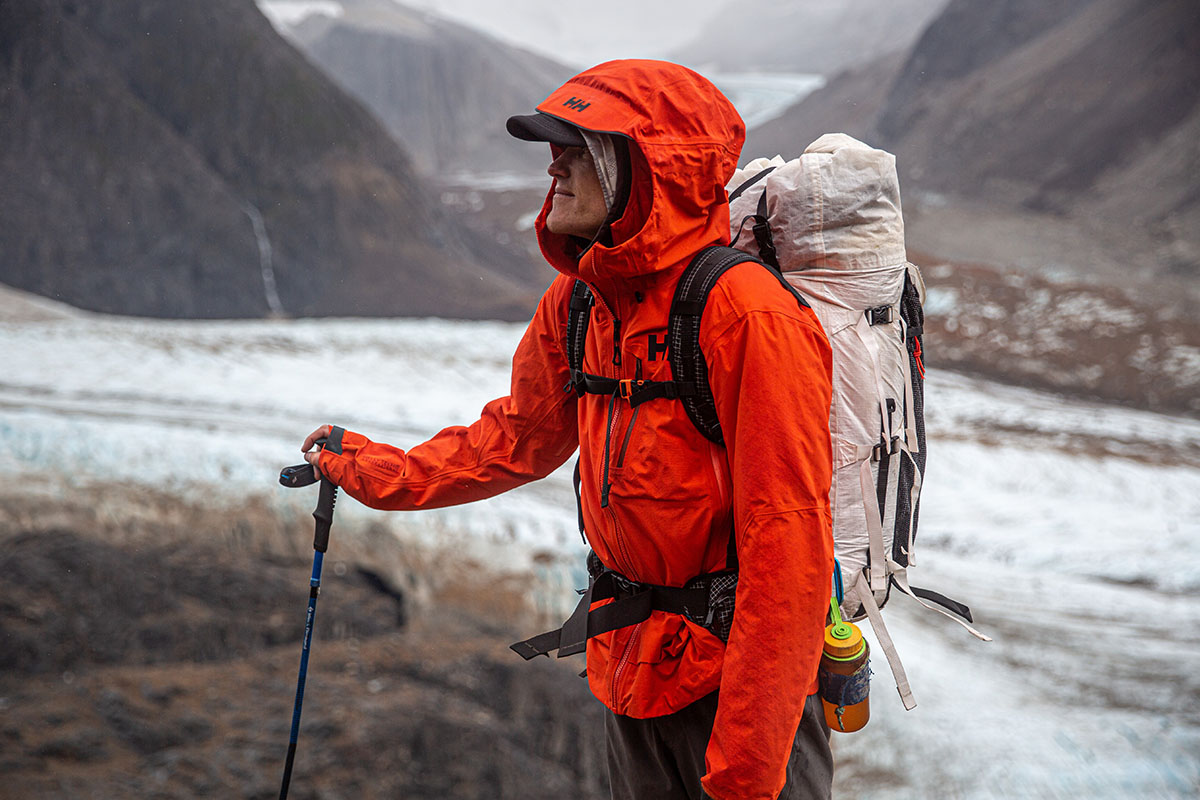
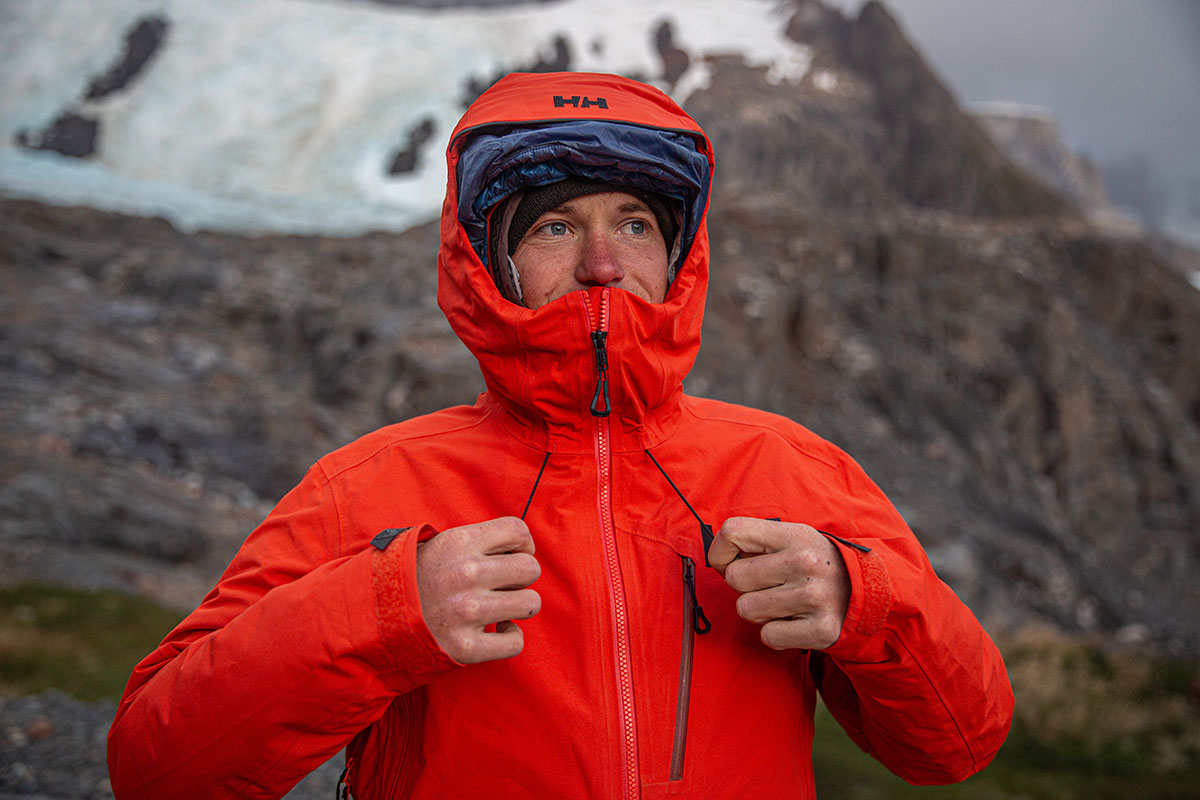
| Jacket | Price | Weight | Waterproofing | Denier | Pit Zips | Pockets |
|---|---|---|---|---|---|---|
| Helly Hansen Odin 9 Worlds 3.0 | $450 | 1 lb. 6.9 oz. | 3L Helly Tech Pro | 70D | Yes | 3 |
| Helly Hansen Verglas Infinity | $450 | 1 lb. 3.4 oz. | 3L Helly Tech Pro | 50D | Yes | 2 |
| Rab Kangri GTX | $425 | 1 lb. 2.5 oz. | 3L Gore-Tex | 70D | Yes | 2 |
| Patagonia Triolet | $449 | 1 lb. 2 oz. | 3L Gore-Tex | 75D | Yes | 5 |
| Arc'teryx Beta AR | $600 | 1 lb. | 3L Gore-Tex Pro | 40D & 80D | Yes | 3 |
The Odin 9 Worlds 3.0 is an impressively weather-worthy and durable hardshell jacket, but the thick and heavy build is decidedly overkill for most outdoor uses. From within Helly Hansen’s own lineup, their Verglas Infinity Shell Jacket offers 3-season appeal at a lower (1 lb. 3.4 oz.) weight and $25-cheaper price point. Comparing the two, both jackets use the brand’s Helly Tech Professional waterproof membrane and boast helpful features like pit zips, helmet-compatible hoods that are highly adjustable, and large hand pockets that clear a hipbelt. The Odin is the better winter companion with its burlier shell fabric (the Verglas is 50D) and chest pocket for additional storage, but the thinner Verglas breathes better for mild-weather backpacking and hiking. A final decision will come down to your preferred activities and objectives.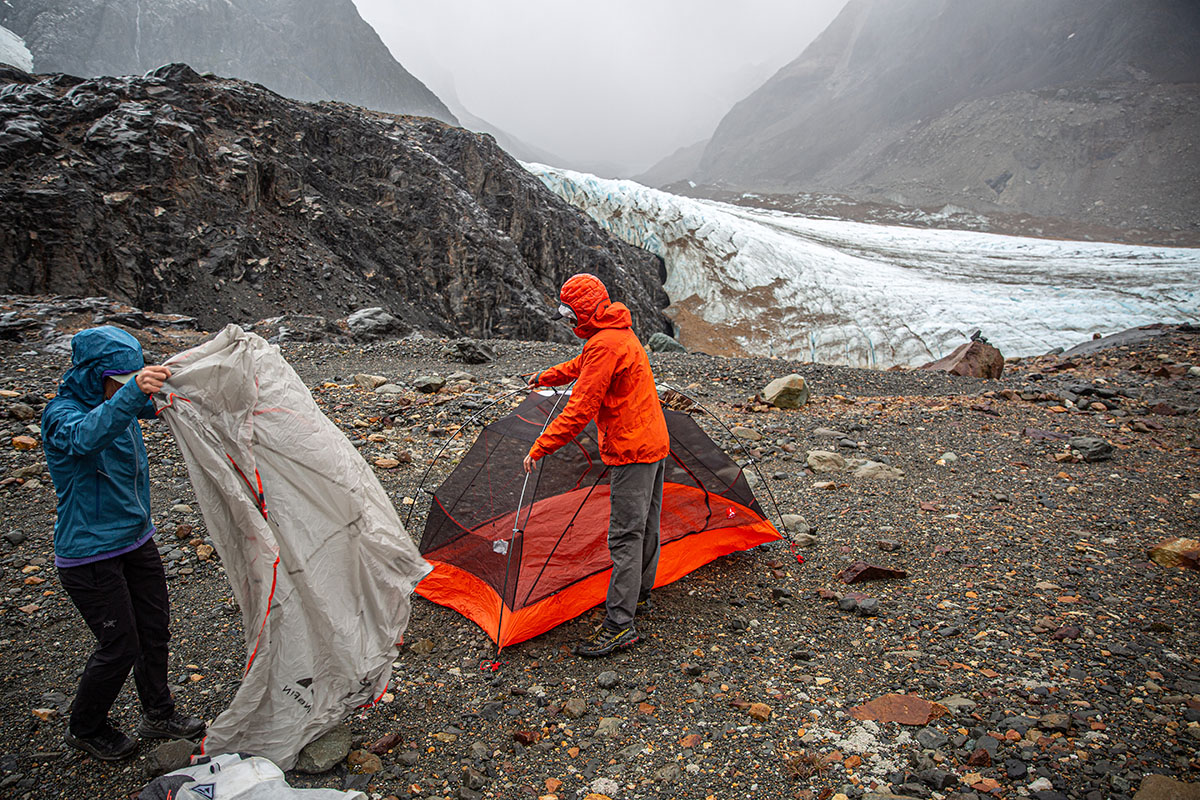
Next up is Rab’s Kangri GTX, which we were also testing in Patagonia. Like the Odin 9 Worlds, the Kangri is an alpine-ready hardshell that’s well equipped for harsh winter conditions. In this case, Rab opted for a proven 3-layer Gore-Tex construction that provided equally reliable protection in Patagonia’s infamous weather. Durability lines up well, too, and the Kangri manages to pull it off for 4.4 ounces and $50 less than the Helly Hansen. Both designs strike us as overkill for hiking and backpacking, but we think the lighter and cheaper Kangri is the slightly better all-rounder.
Patagonia’s Triolet Jacket is another proven hardshell with a clear winter slant. For around $25 and 5 ounces less than the Odin 9 Worlds, the Triolet offers comparable durability with a 75D exterior and stacks up well in protection with 3-layer Gore-Tex. You also get a notable upgrade in storage: The Patagonia includes four exterior zippered pockets plus a drop-in interior pocket for quickly stashing skins or a pair of ski gloves. Plus, the Triolet excels as a ski jacket thanks to its extended cut and regular fit that easily accommodates a midlayer underneath, embedded Recco reflector, and loop at the back for attaching to compatible Patagonia snow pants (for more, see our in-depth Triolet review). Neither design is breathable enough to cross over well for mid-summer backpacking, but we consider the Triolet the superior design for its comparable all-around performance and fuller feature set at a lower weight and price.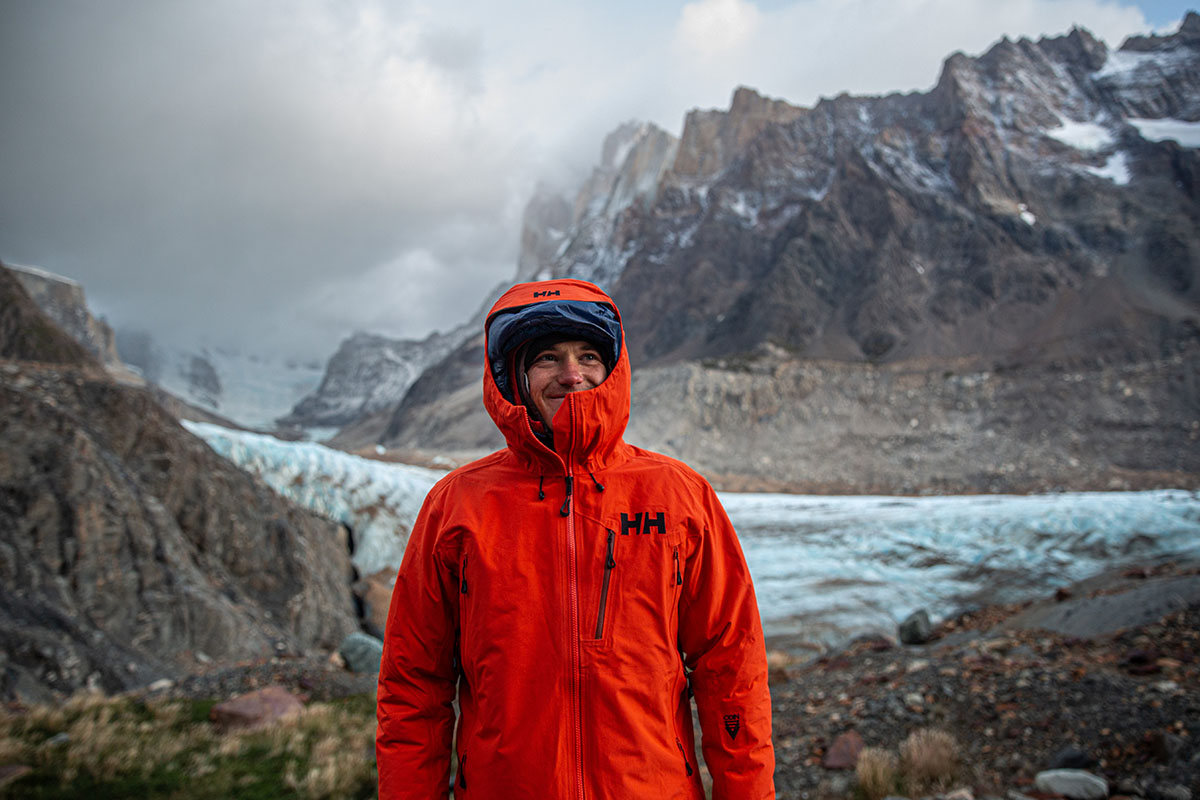
Last but not least, we’d be remiss not to compare the Odin to our top-rated hardshell this year: Arc’teryx’s Beta AR. Right away, we’ll note that the Arc’teryx doesn’t come cheap at $600, but the added investment comes with several upgrades. First is the Gore-Tex Pro construction, which is a class leader in waterproofing and highly durable to boot. The Odin 9 Worlds is the thicker option (70D vs. 40D), but Arc’teryx included burly 80D reinforcements on the shoulders. As expected from the brand, the Beta AR nails the smaller details, too: The fit is just right for both layering and mobility, there’s an internal pocket for stashing smaller valuables, and the DropHood design is well executed with a separate collar that provides protection even if you’re not wearing the hood. Finally, comfort and breathability are a notable step up from the Odin—all for just 1 pound even. If you can get past the steep price point, the Beta AR is unmatched for all-around backcountry use.
If you’re thinking about buying gear that we’ve reviewed on Switchback Travel, you can help support us in the process. Just click on any of the seller links above, and if you make a purchase, we receive a small percentage of the transaction. The cost of the product is the same to you but this helps us continue to test and write about outdoor gear. Thanks and we appreciate your support!
Depending on the seller, most products ship free in the United States on orders of $50 or more. International shipping availability and rates vary by seller. The pricing information on this page is updated hourly but we are not responsible for inaccuracies.